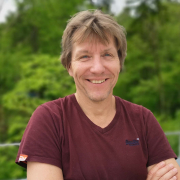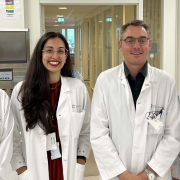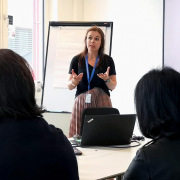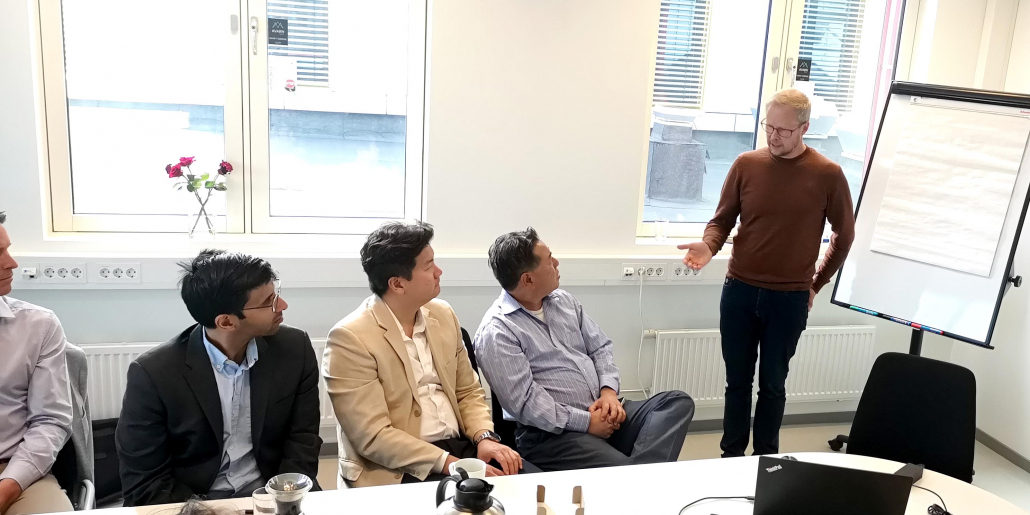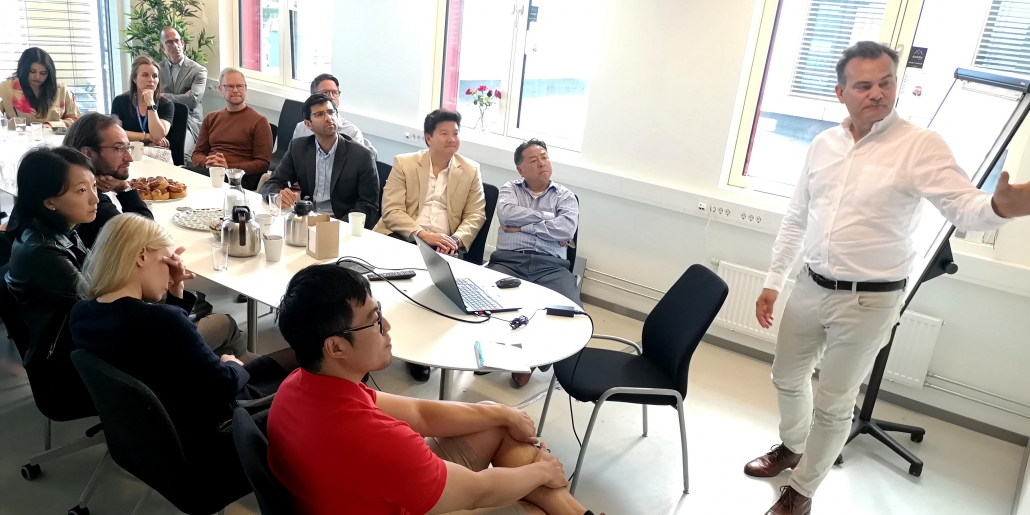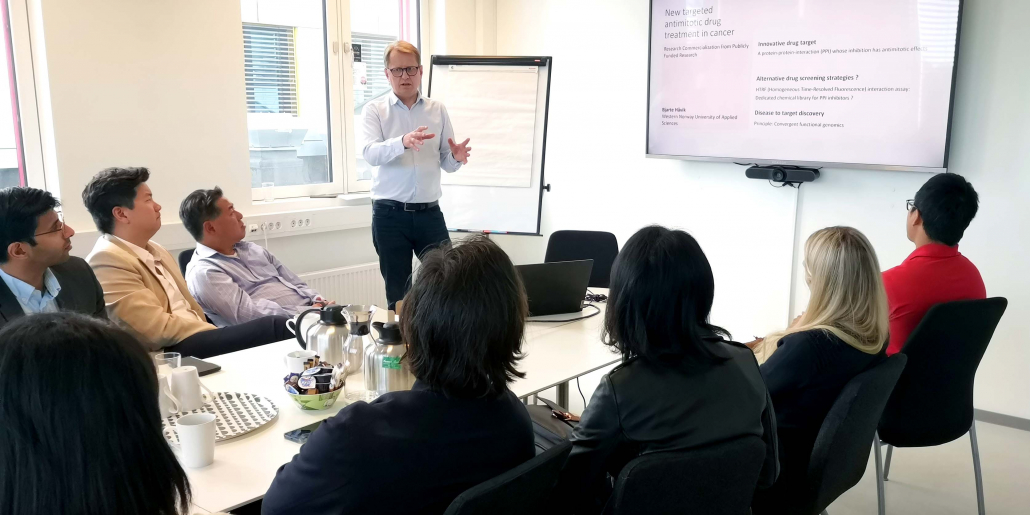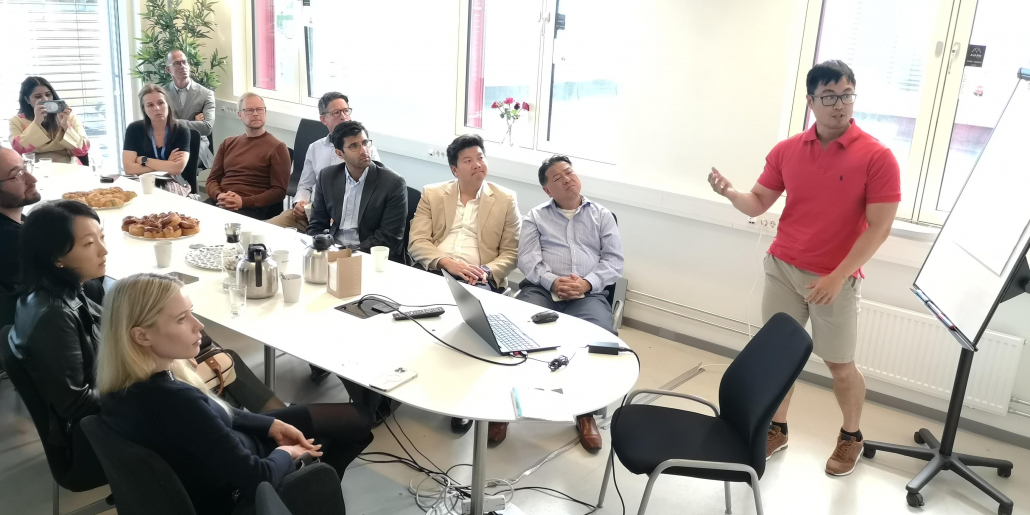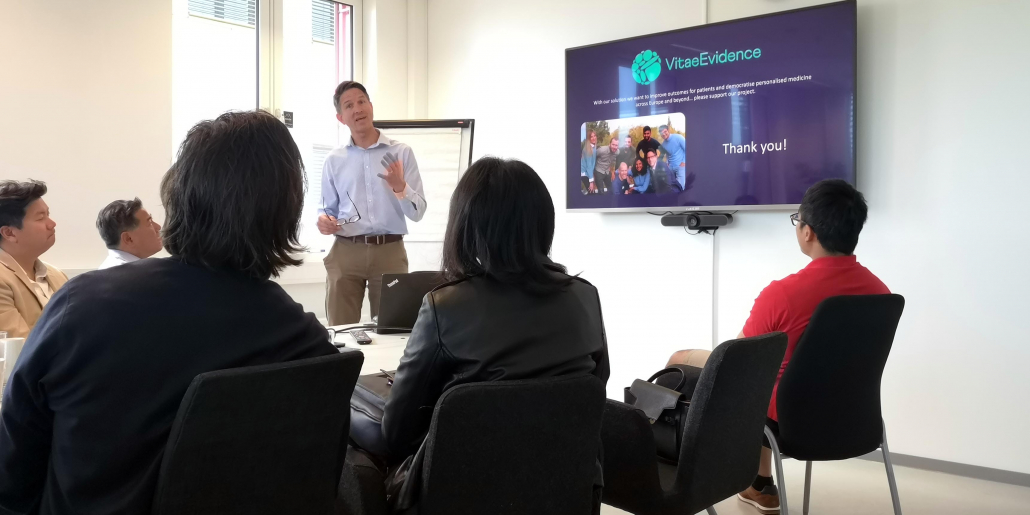Artificial intelligence is changing the way radiation therapy is used to combat cancer.
A Norwegian technology, developed by the company Kongsberg Beam Technology to improve the precision of external beam radiation therapy, is being tested at Oslo University Hospital.
“There are almost half a million Norwegians living with cancer today. Many more cancer patients survive after radiation therapy, but that doesn’t necessarily mean the patients get well. What concerns us most today is to create treatment plans with less side effects,” said Karsten Rydén-Eilertsen, Head of Proton Therapy Physics at Oslo University Hospital and responsible for the test project.
Huge developments
Karsten Rydén-Eilertsen has worked with radiation therapy at Oslo University Hospital for 33 years. He remembers when the doctors had to make radiotherapy plans for cancer patients using only 2D X-ray images and palpating the tumour site with their hands. Medical physicists and radiotherapy technicians would calculate the dose using standardised charts.
“I have experienced an explosive development in the field of radiation therapy against cancer. We now only use three- and four-dimensional images that we transfer to a sophisticated treatment planning system, where we can outline the tumour and vital organs in detail. There are advanced algorithms for calculating the exact right doses for the individual patient,” Rydén-Eilertsen explained.
These developments are thanks to major advancements in imaging technology, computer power, programming and data handling.
“The big difference today is that the level of personalisation and precision is much higher. We can deposit a high dose of radiation that can destroy the tumour while sparing healthy tissue,” Rydén-Eilertsen commented.
Still many side-effects
With radiation therapy, doctors aim to eradicate the tumour, while minimizing the damage to healthy tissue and vital organs.
“It is a difficult balancing act, because sometimes the organs are so close to the tumour that you can’t avoid affecting them with radiation. Sometimes, you need to choose between destroying the tumour and keeping a vital organ,” Rydén-Eilertsen said.
This dilemma isn’t unique for radiation therapy, but is also true for other cancer treatments, such as surgery and chemotherapy.
“With radiation therapy, you will never have zero radiation dose to the surrounding tissue. There will always be some side-effects. My hope with proton therapy is that these side effects will be reduced,” added Rydén-Eilertsen.
Photons vs. protons
Traditional radiation therapy involves beaming millions of photons through the patient’s body to the tumour. The photons deposit radiation all along their way through the body before exiting. It is not possible to control the photons to only deposit radiation to cancer cells.
“Proton therapy is different. Protons are heavy particles that loose most of their energy the moment they stop. By adjusting their initial speed, you can direct them to deposit most of the radiation dose at the site of the tumour. This means that you don’t affect tissue ‘behind’ the tumour and there is minimal damage ‘in front’ of it. This opens for the possibility to greatly reduce side-effects,” explained Rydén-Eilertsen.
The challenge with protons however is that they are very sensitive to which type of tissue they pass through. The energy loss will be different in bone versus in fat.
“In proton therapy, changes in the patient’s body during treatment are critical. The anatomy of the patient may change from when we take the first CT scan for treatment planning to the day of treatment. A treatment course may take several weeks and involve 30-40 treatment sessions. The anatomy may change both between and during a session. Ideally, one may think that a new plan should be created for every session, but today we don’t have the resources for this. That is why we introduce margins to ensure that the tumour gets properly irradiated every time. Sometimes these margins need to be so large that the patient may still get side-effects,” said Rydén-Eilertsen.
First of its kind
This is where the MAMA-K technology developed by Kongsberg Beam Technology comes in. It can build a digital twin of the patient representing their anatomy as accurately as possible. The twin is created by using advanced mathematical models that allow for all image data sets to be combined into a longitudinal, virtual representation of the patient’s anatomy.
“With this mathematical modelling, we can visualize and quantify how the patient’s body, tumour and vital organs change over time, as well as, make an accurate scoring of the accumulated doses to the tumour and organs at risk,” said Rydén-Eilertsen.
This system will generate knowledge about how different cancer patients’ bodies, tumours and vital organs change while undergoing radiation therapy and the impact this may have on the delivered dose. This will be valuable when starting up proton therapy centres in Norway.
“The mathematical models may make it possible to even predict anatomical changes and the related consequences for the dosage. Artificial intelligence can tell us how the patient might look in 24 hours, so we can create a treatment plan accordingly. The next day, we can take a new CT image and compare if the AI’s prediction is correct. We can then introduce smaller margins, which will also reduce side-effects,” explained Rydén-Eilertsen.
There are 16 treatment machines that generate 3-dimensional data and 2 000 patient appointments every week at the Radium Hospital, generating a large volume of potential test data, which could map changes in cancer patients receiving radiation therapy.
“These data will be extremely valuable when we enter the era of proton therapy because they will tell us more about how patients’ bodies change. Then we can become better at adapting treatment plans and hitting the tumour directly,” explained Rydén-Eilertsen.
AI to identify organs
The next step will be to adjust the treatment plan while the patient is on the table by using real-time images. To accomplish this, the shape and location of the tumour and organs at risk must be extracted from the images. The use of AI will be crucial to realize the speed needed. AI models to identify different parts of the anatomy must be trained and tested – something Kongsberg Beam Technology hopes to have in place soon.
“One of the biggest workloads in radiation treatment today is that doctors must manually outline the tumour and organs at risk in the CT images. We have already tested AI methods to identify anatomic parts of the body, especially vital organs, and the models are very good at this. To find tumours is a different story. We have tested some models that can find breast tissue, and they work well. I think it is only a matter of technological development. A lot will happen in this area,” said Rydén-Eilertsen.
Norwegian proton therapy centres
There are two proton therapy centres being built in Norway and Rydén-Eilertsen believes the MAMA-K technology will be very useful in these centres.
“The exciting part about the establishment of proton therapy is that the number of patients eligible for treatment is quite small, perhaps between 100-200 patients every year, while the capacity of the centres is around 800 patients a year. About 70-80 per cent of patients will be recruited via clinical studies, which have the goal to document that side effects are less with protons than with photons. In this setting, it is super important to know what the patient looks like, and MAMA-K will be a useful tool to achieve this. I don’t know about anyone else that is developing this kind of technology. It is truly unique,” said Rydén-Eilertsen.
Kongsberg Beam Technology is a member of Oslo Cancer Cluster and participating in the Accelerator Programme at Oslo Cancer Cluster Incubator. Read more about the company at their website https://www.kongsbergbeamtech.com/
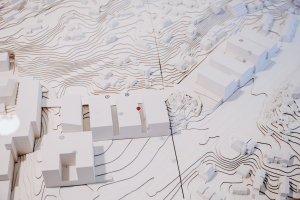

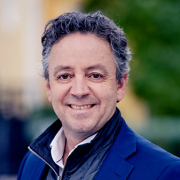 Thomas London
Thomas London